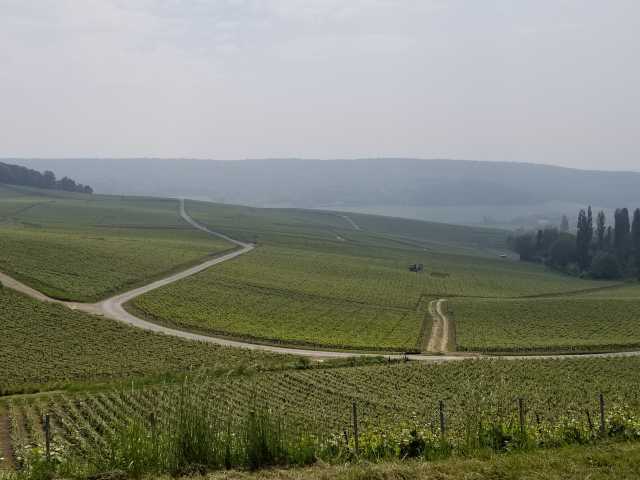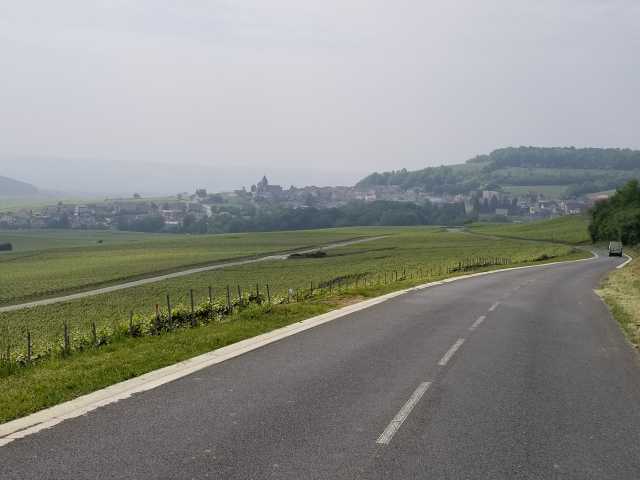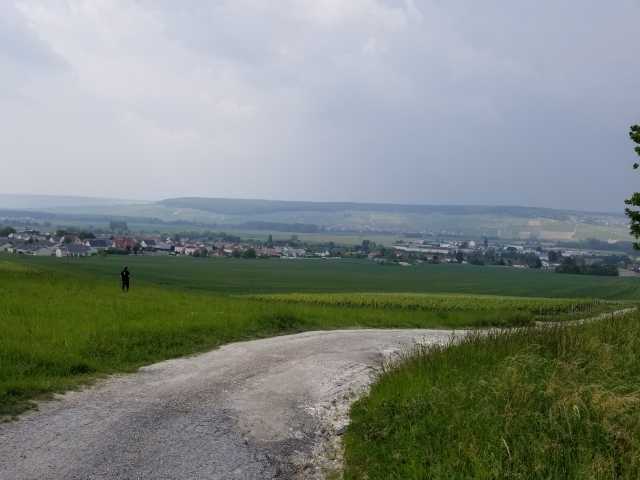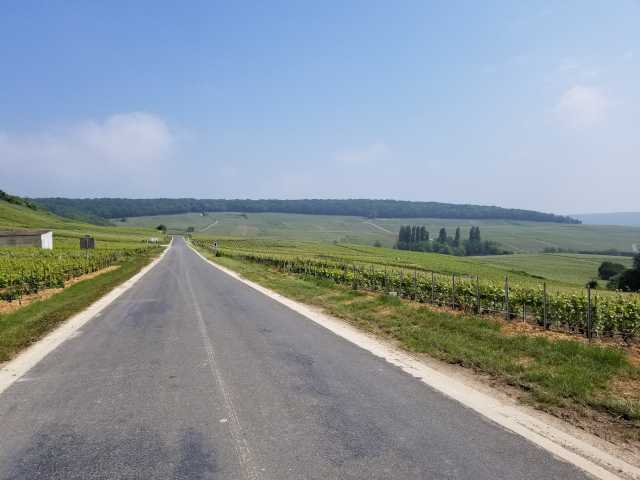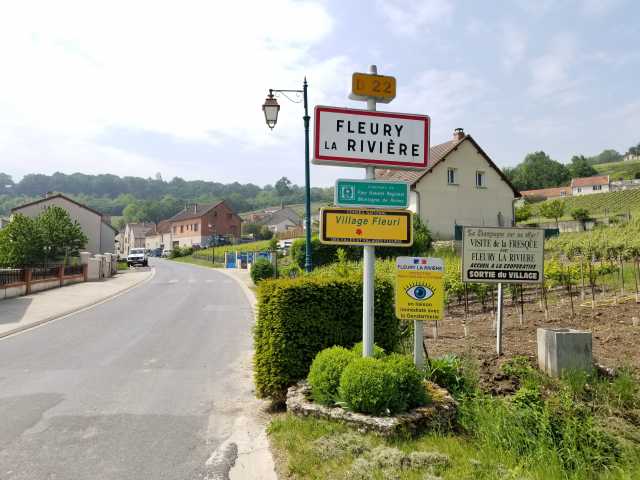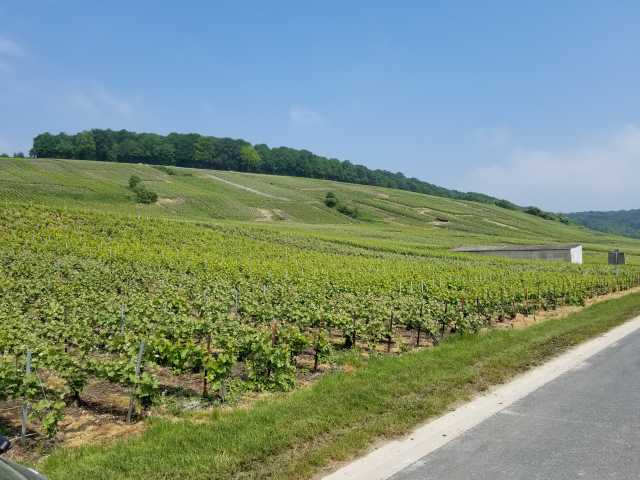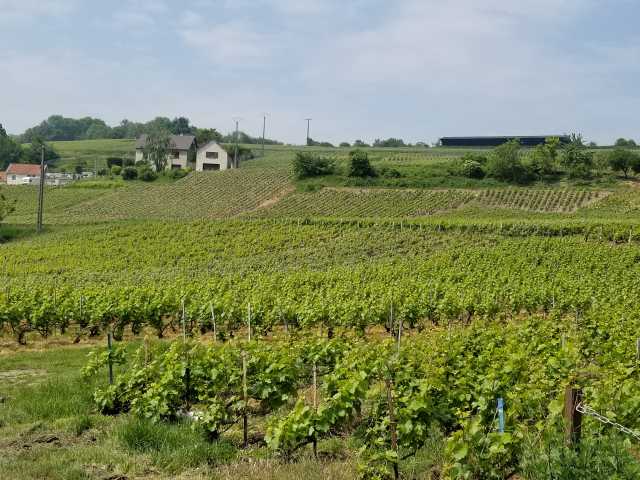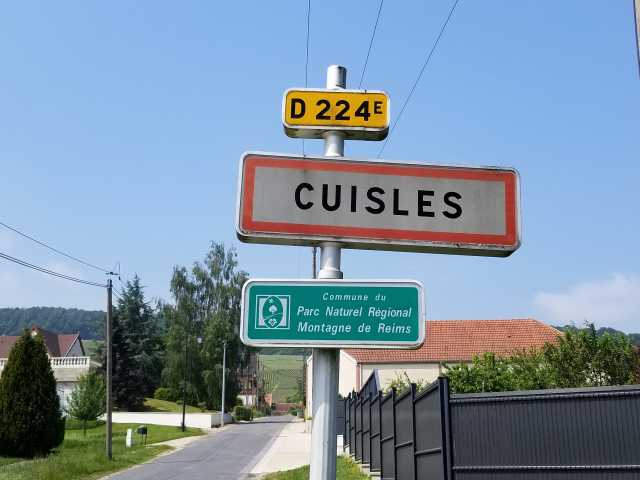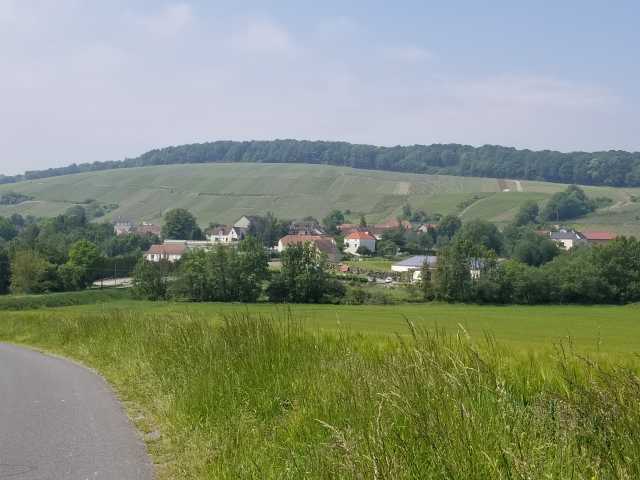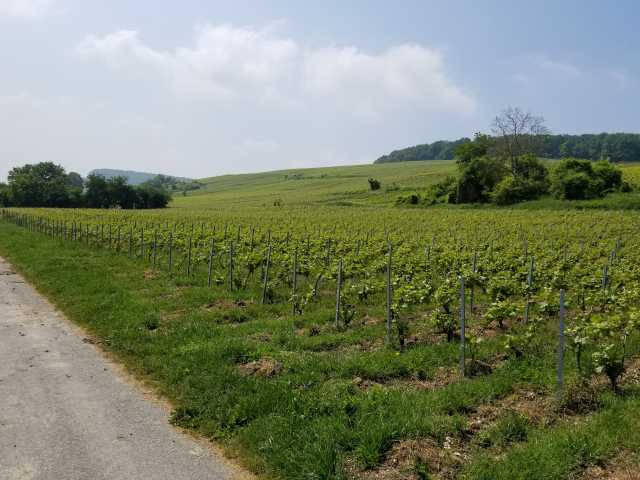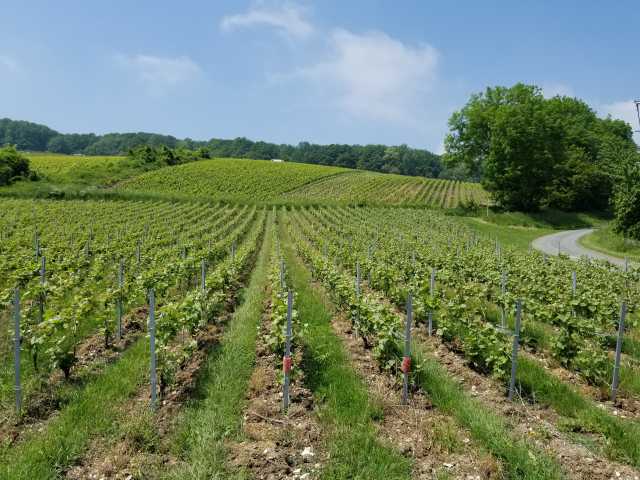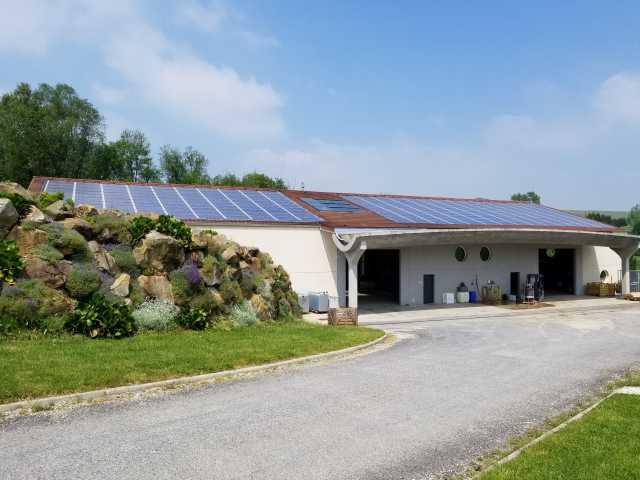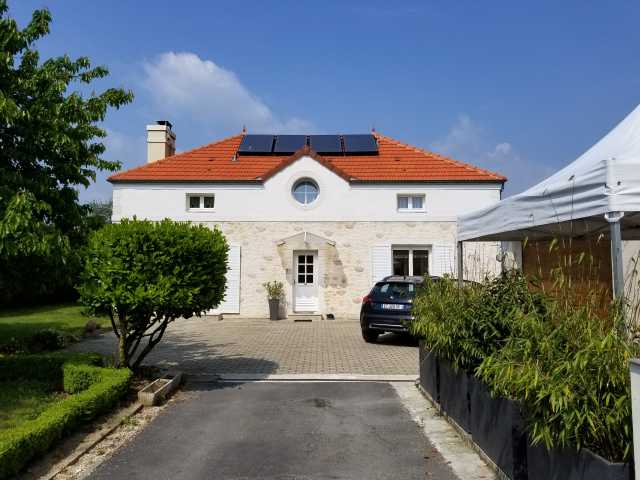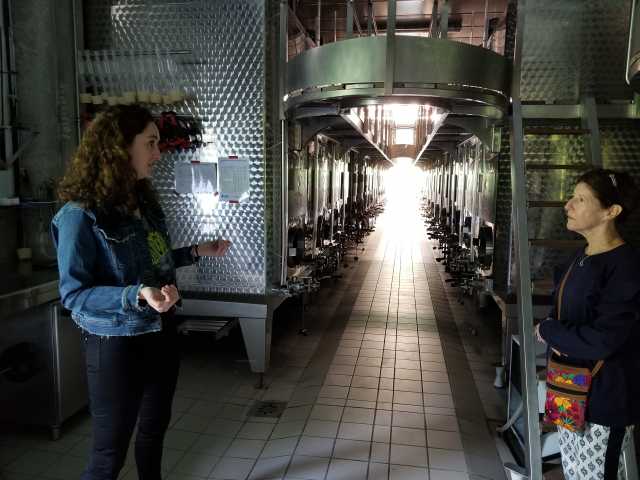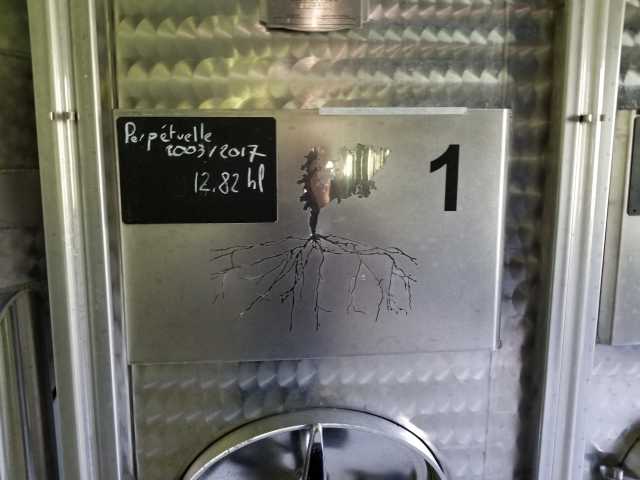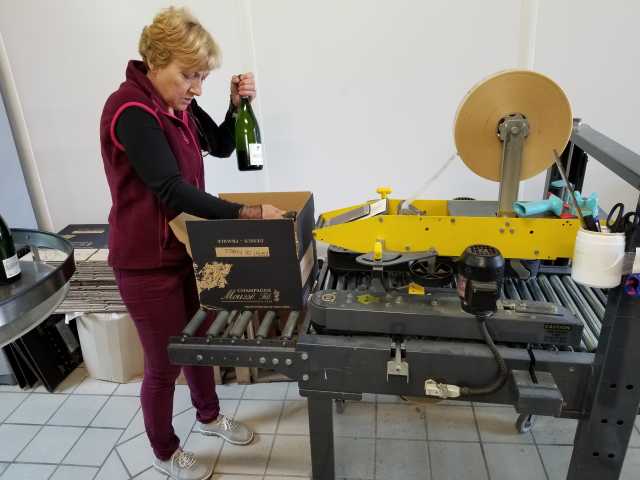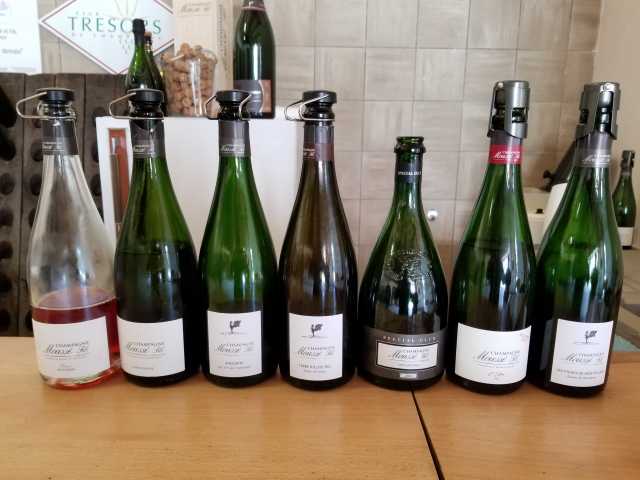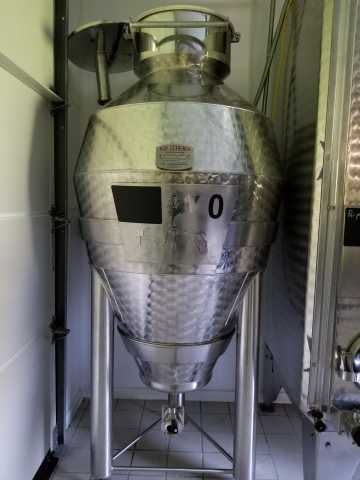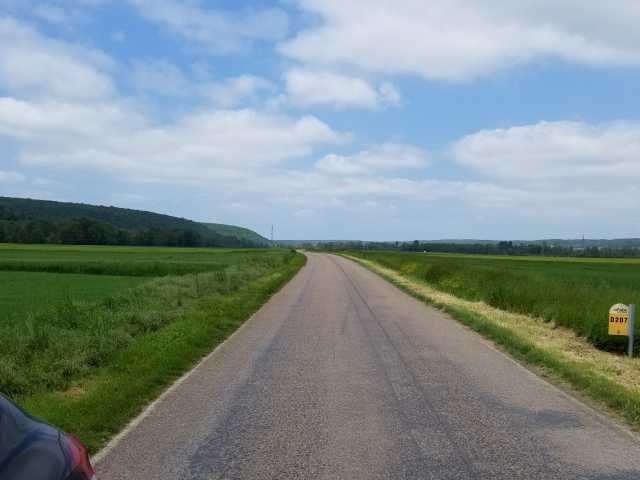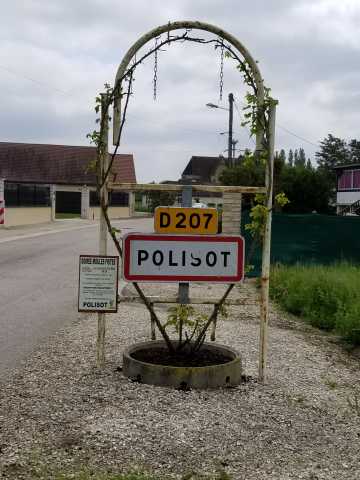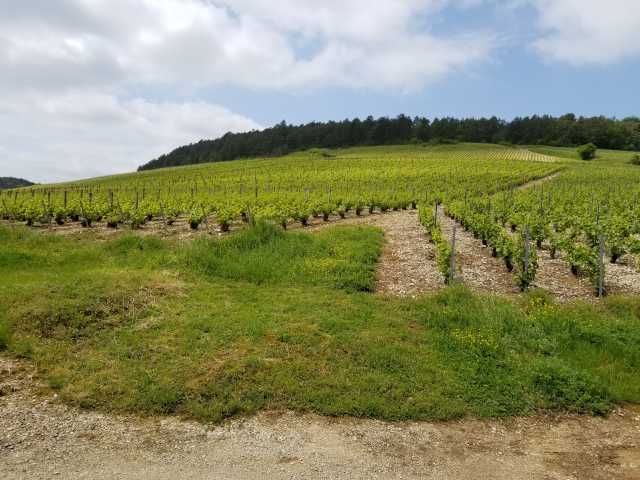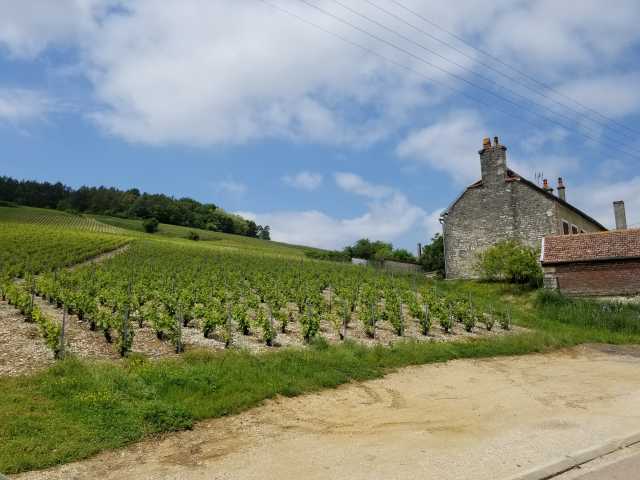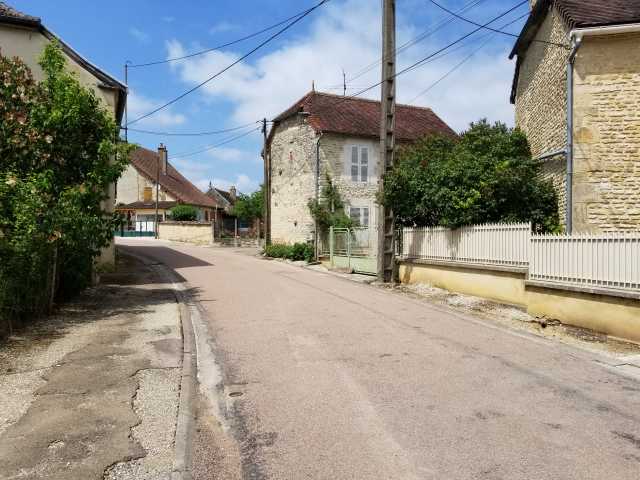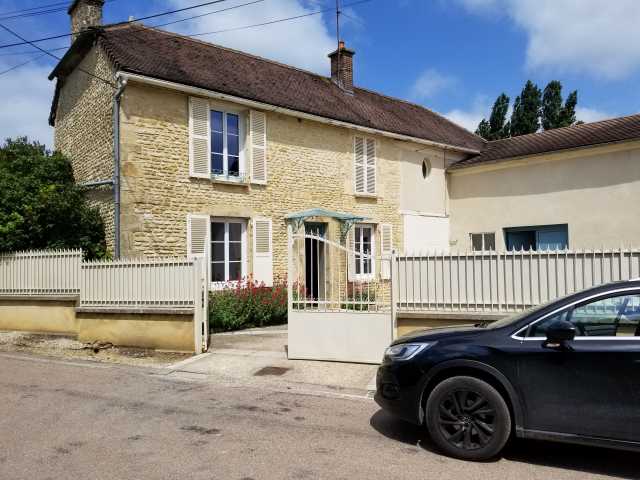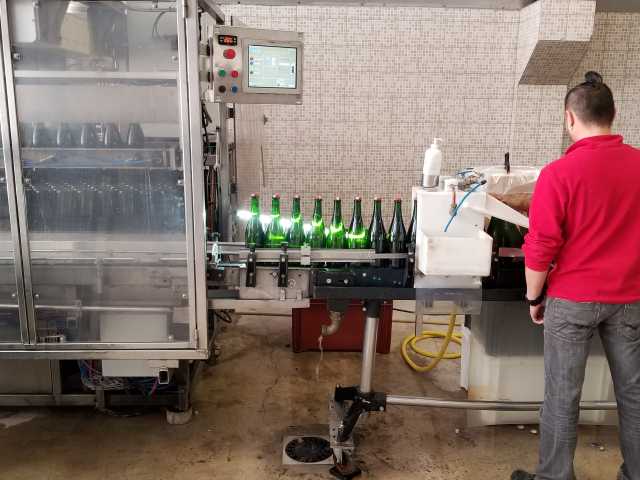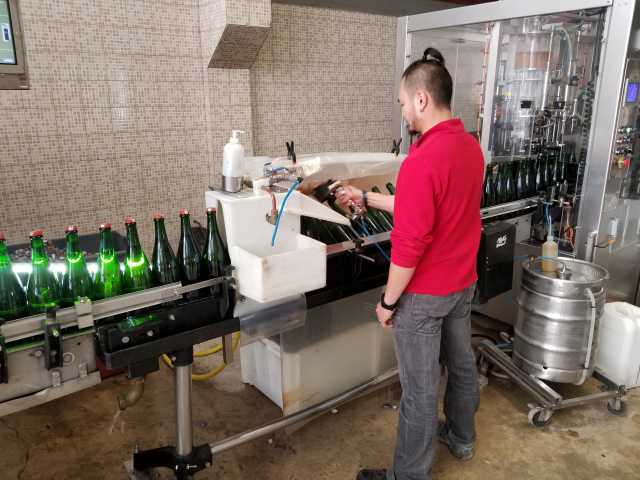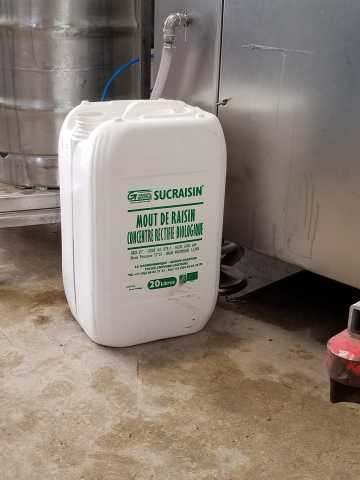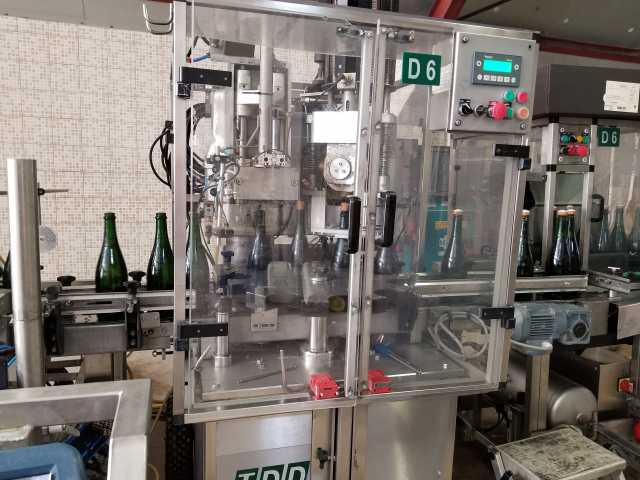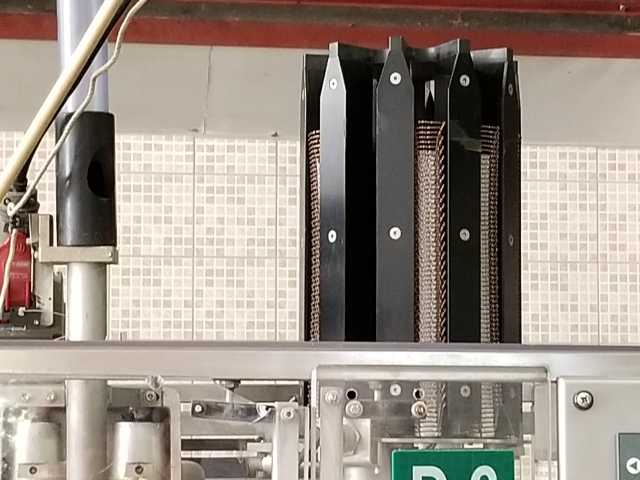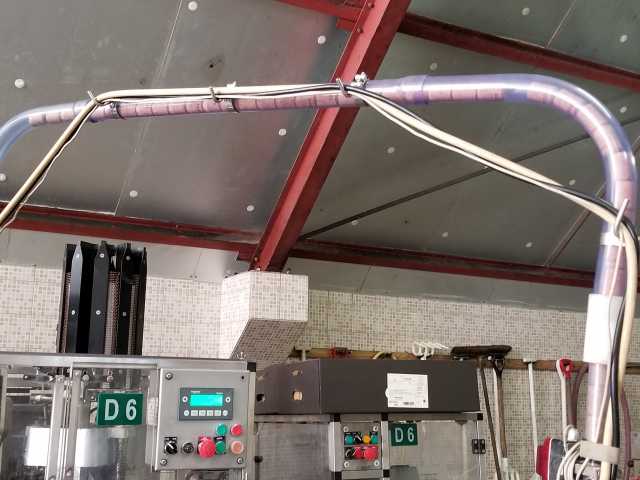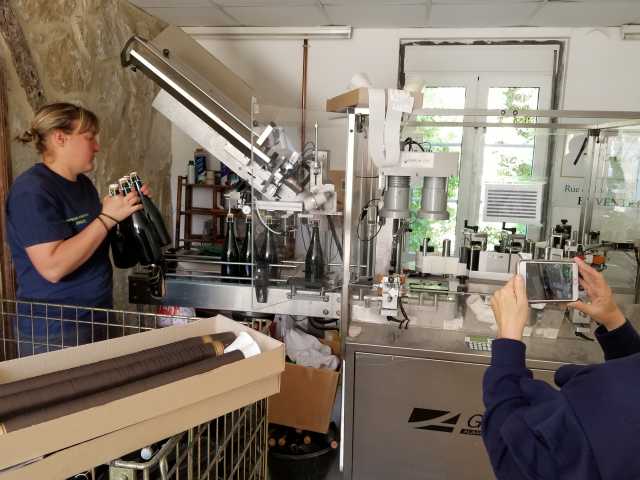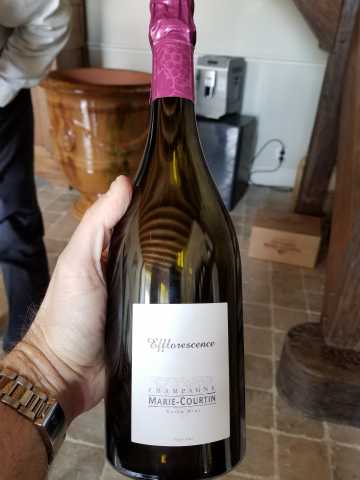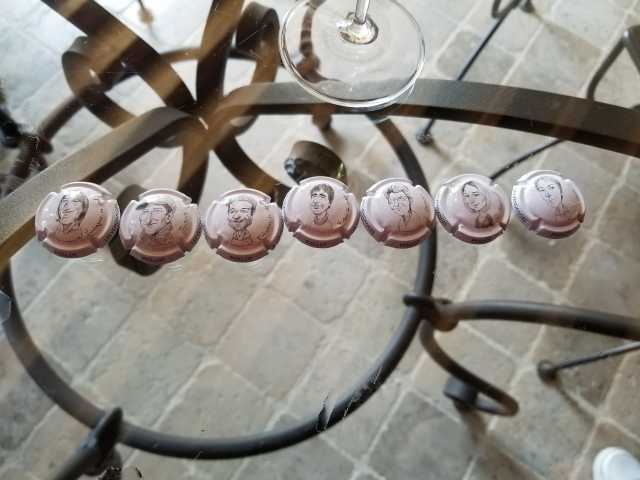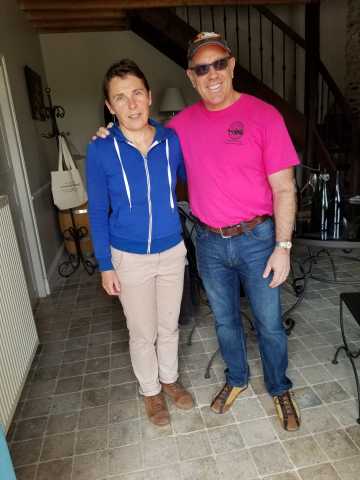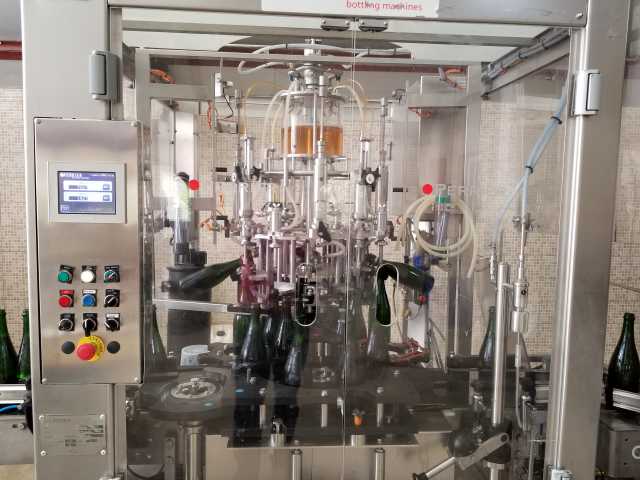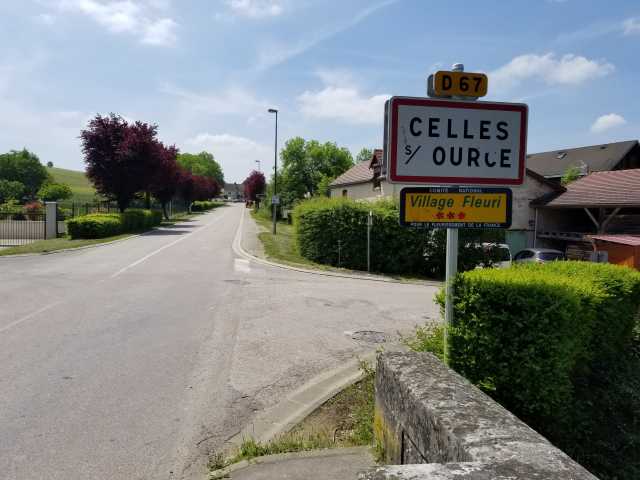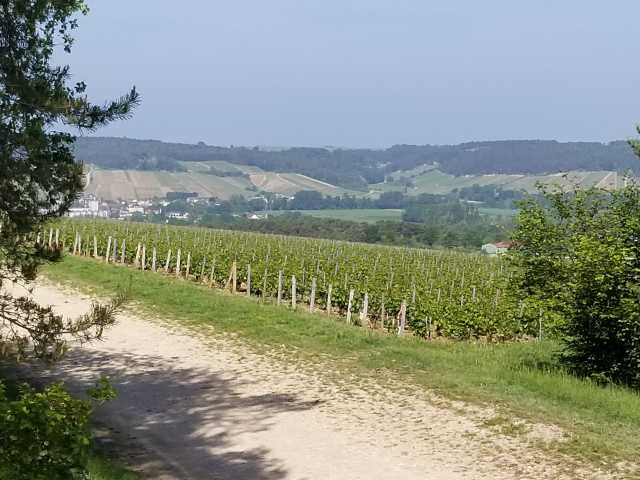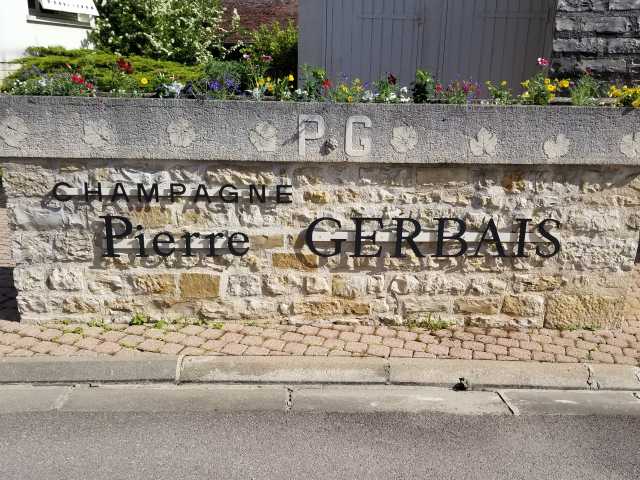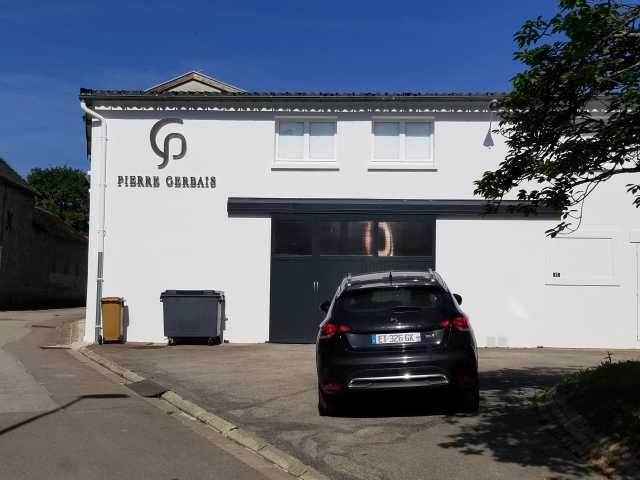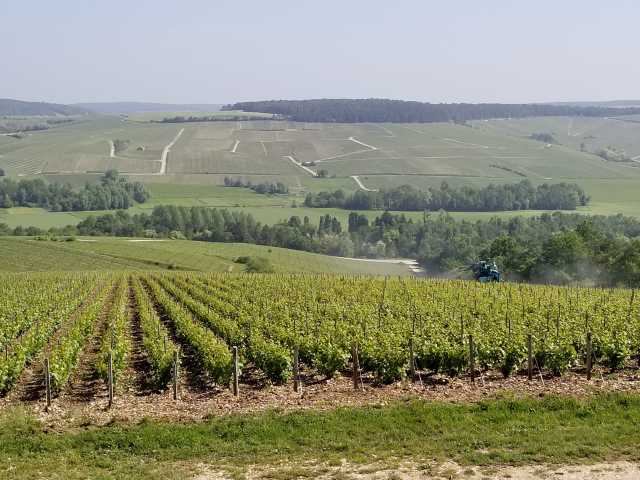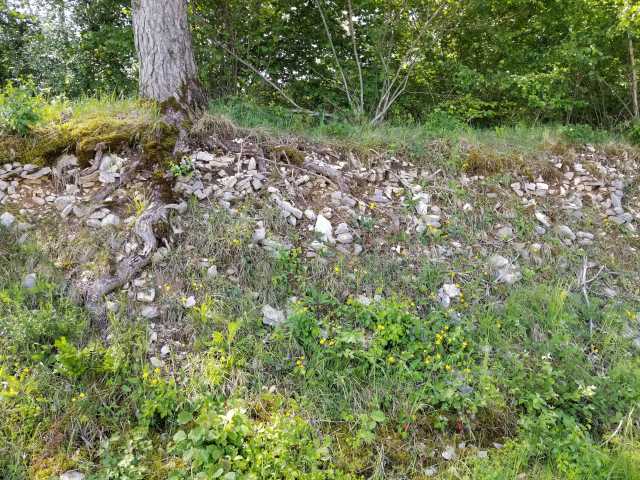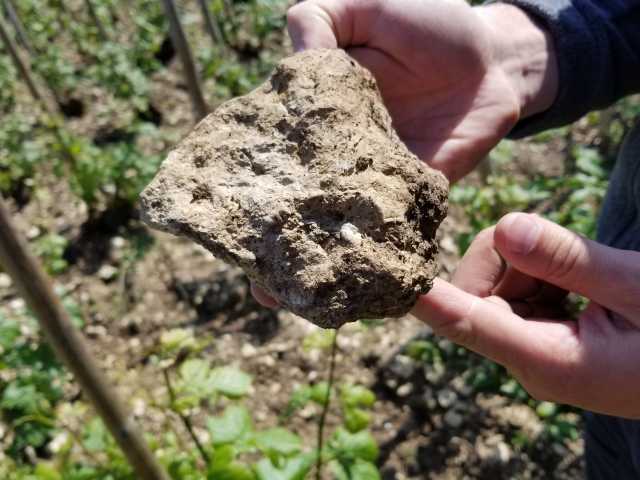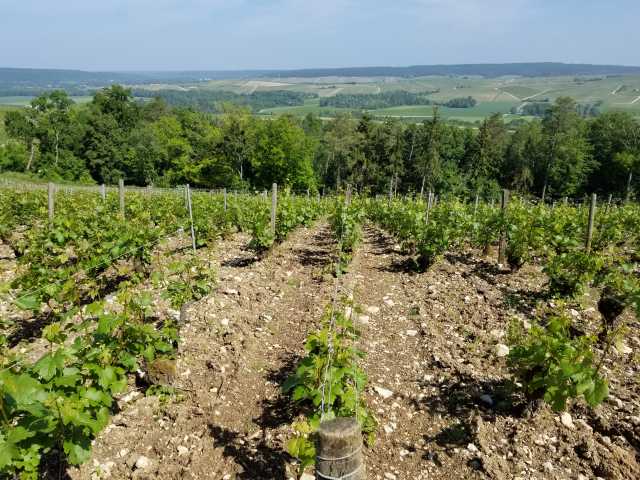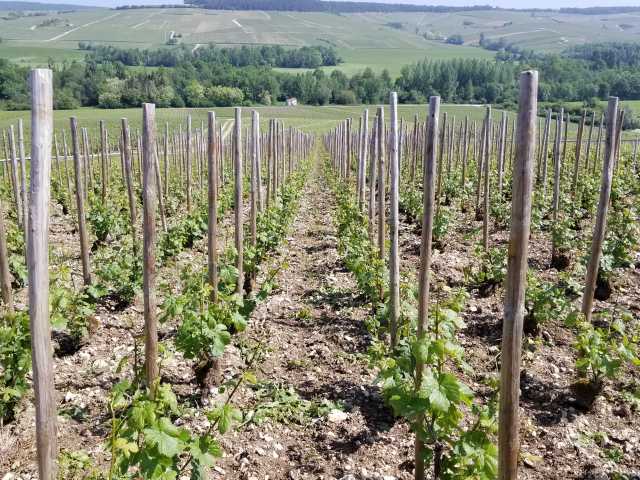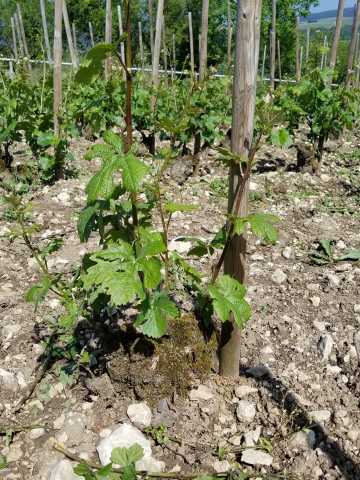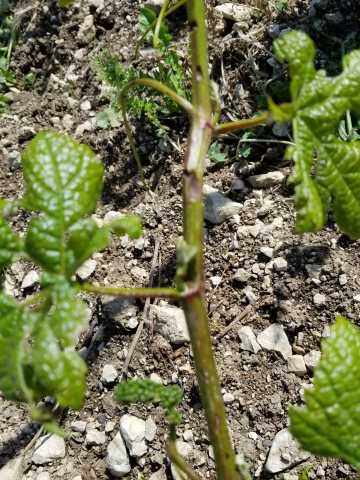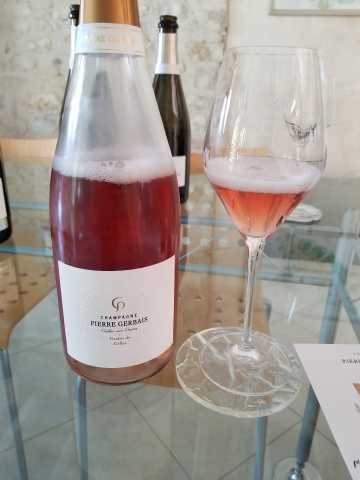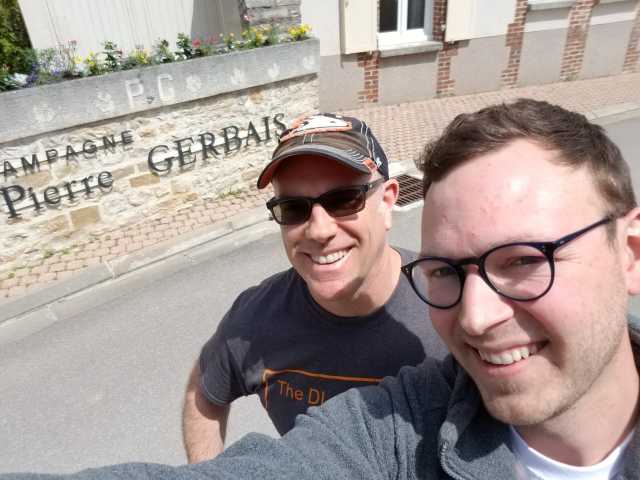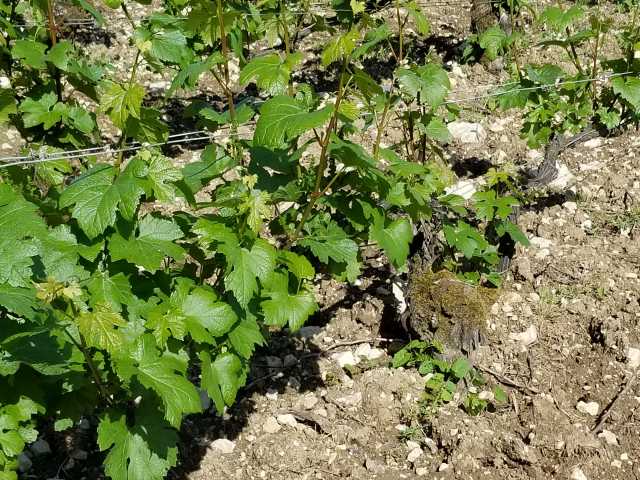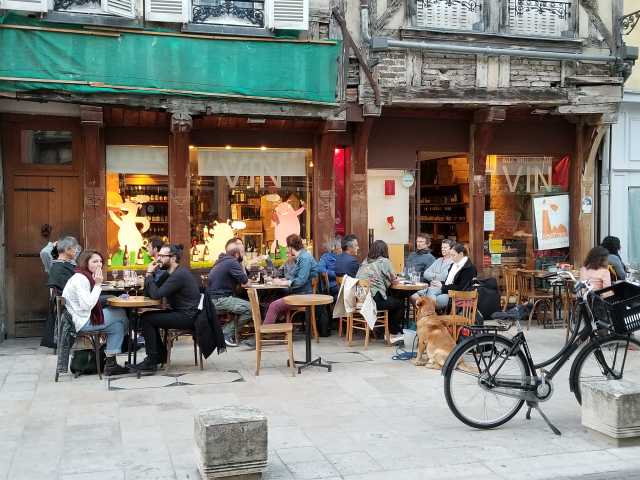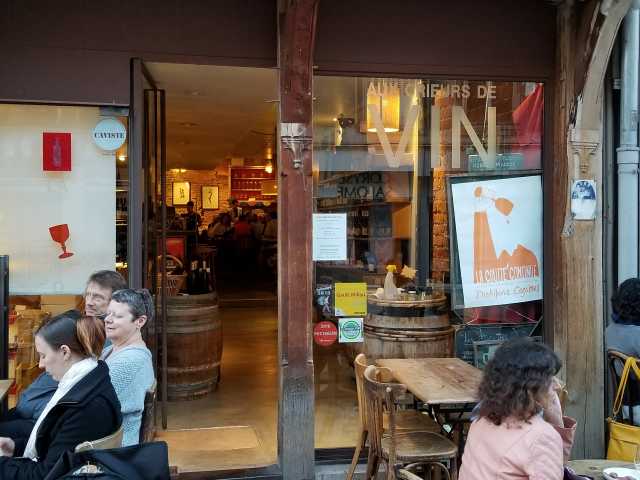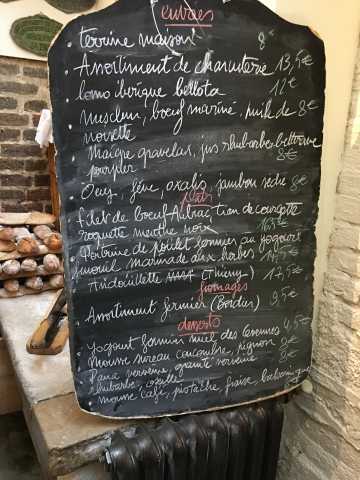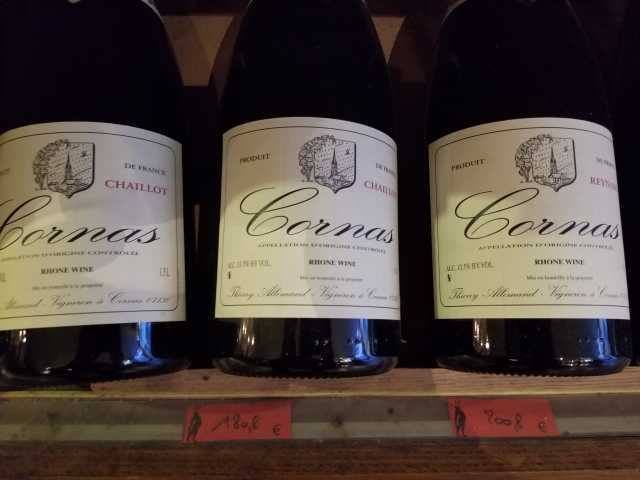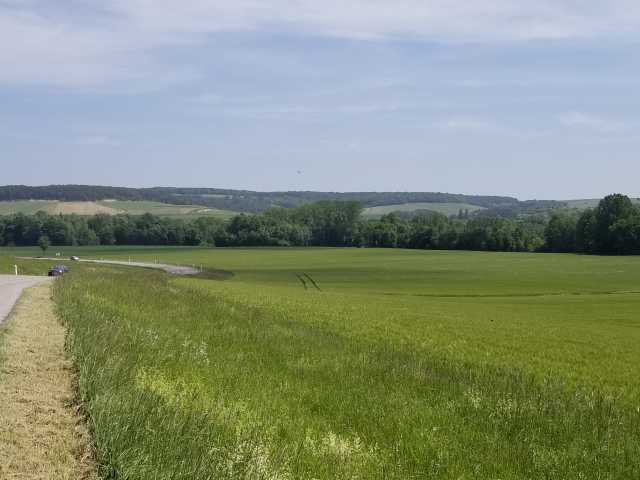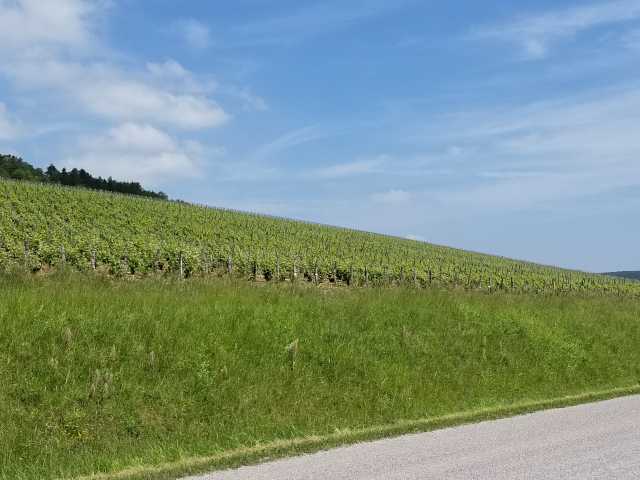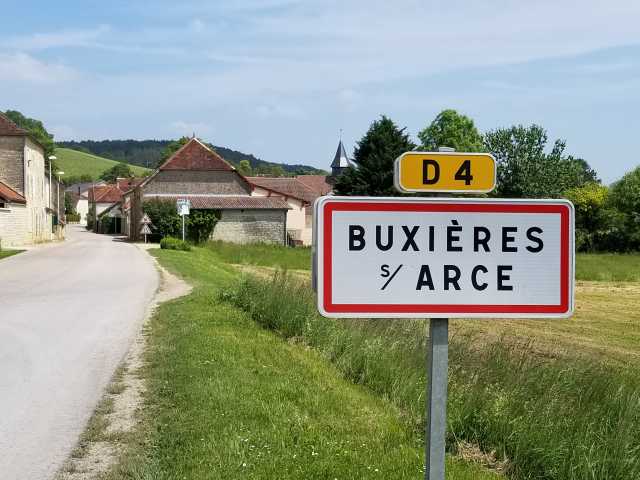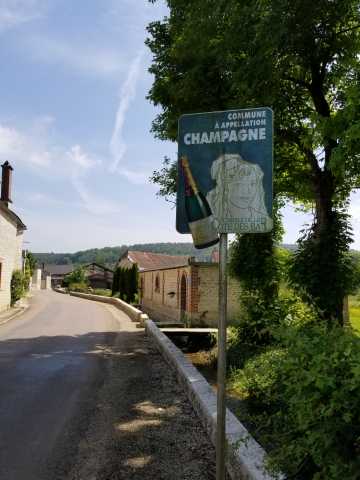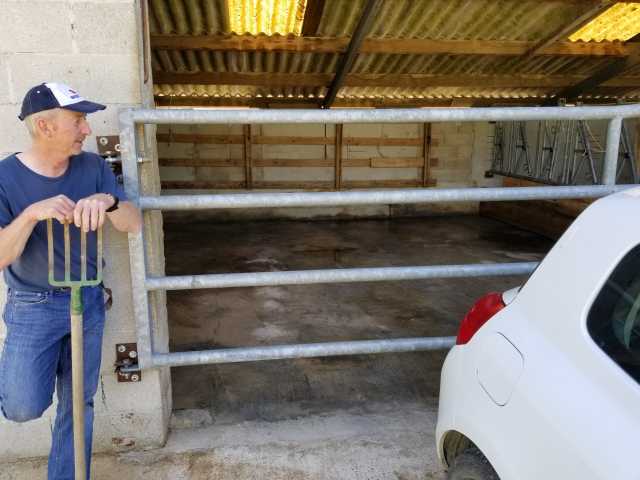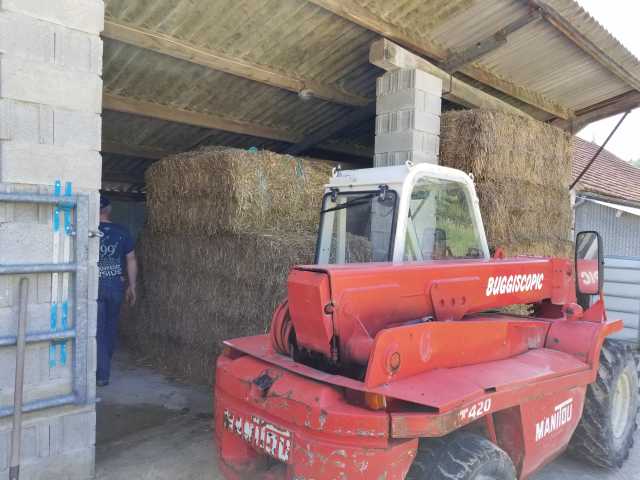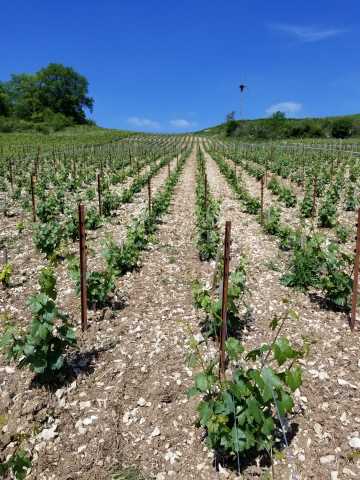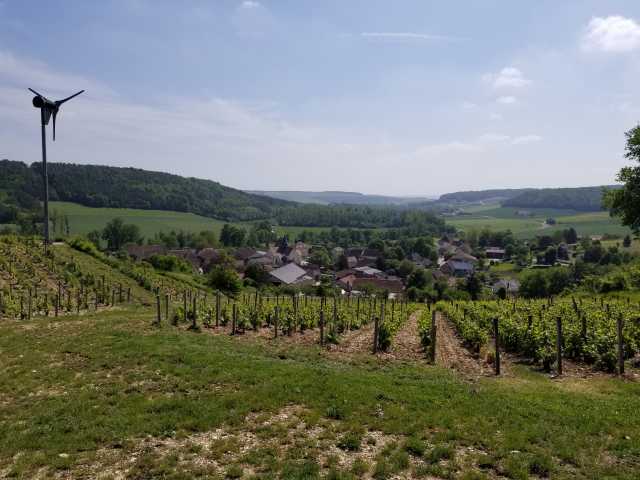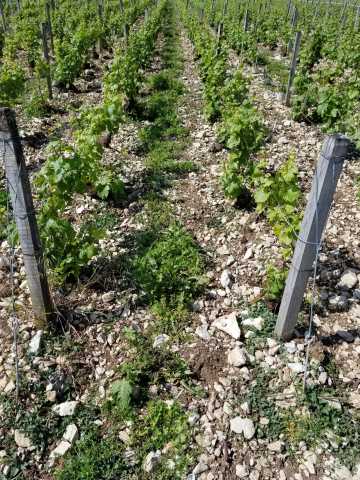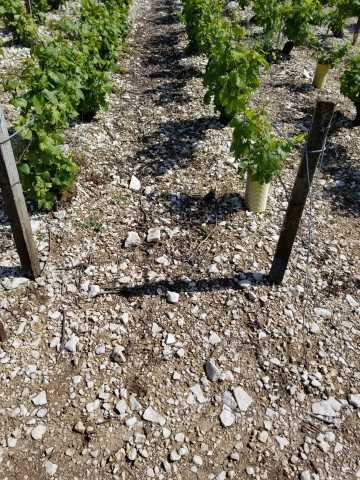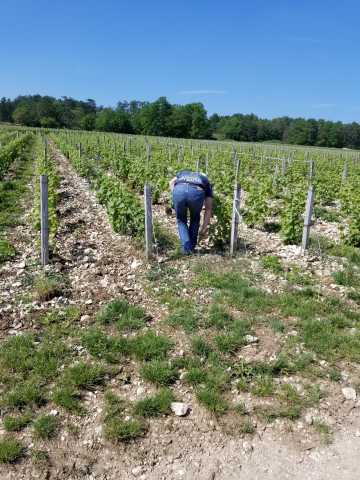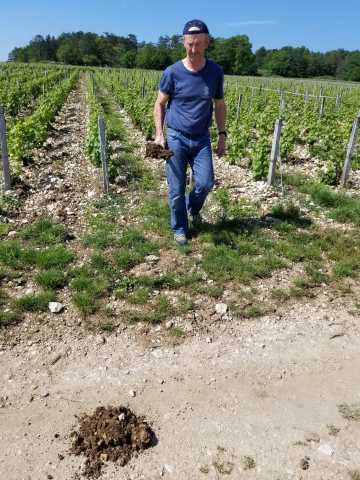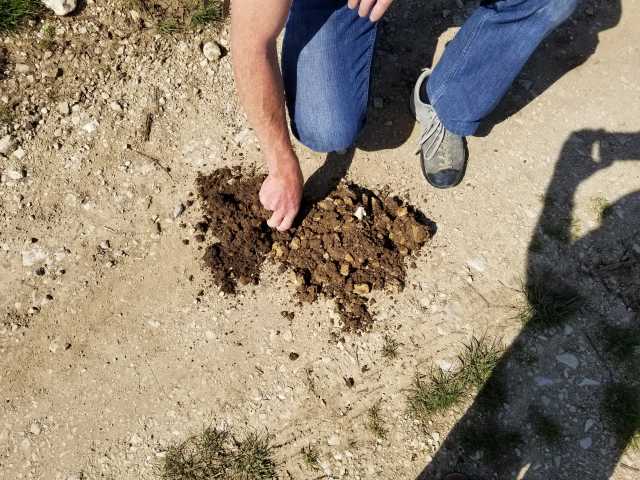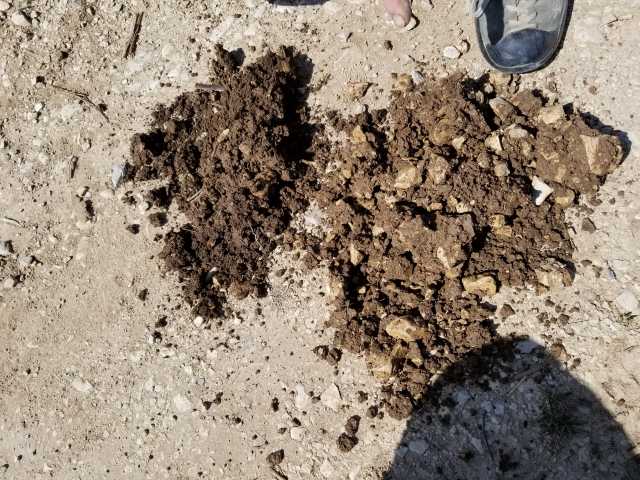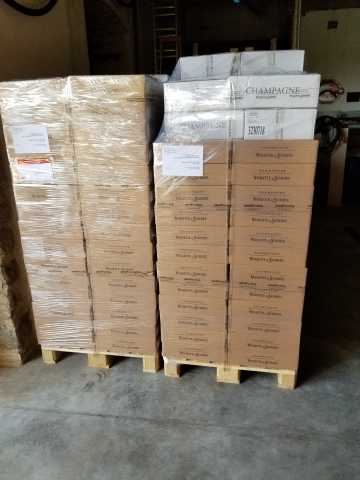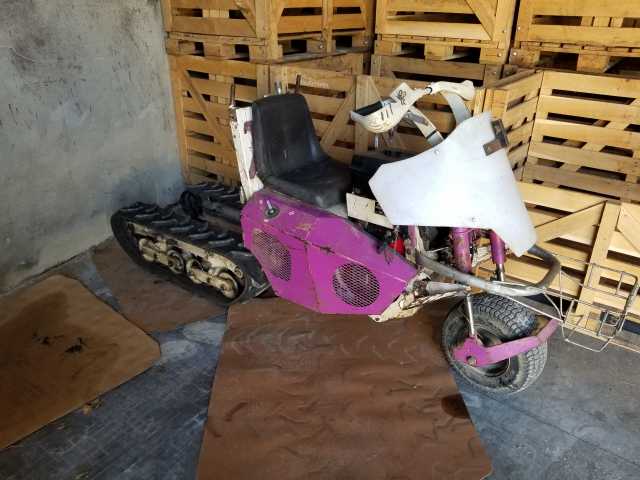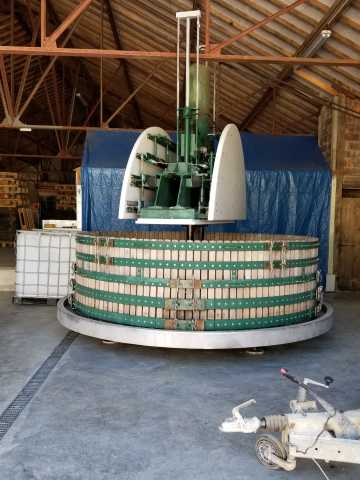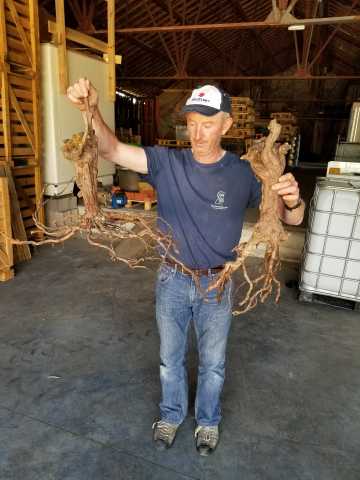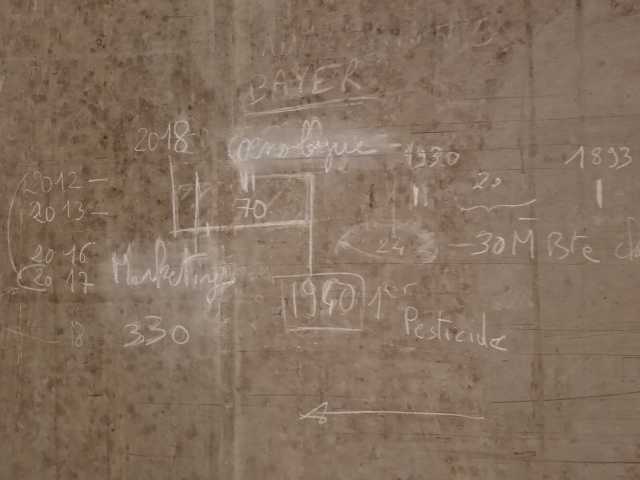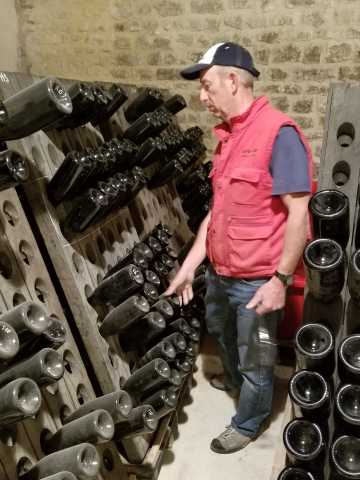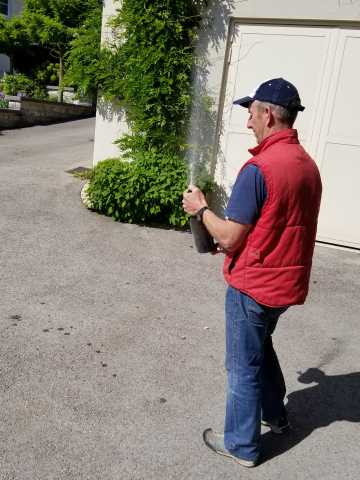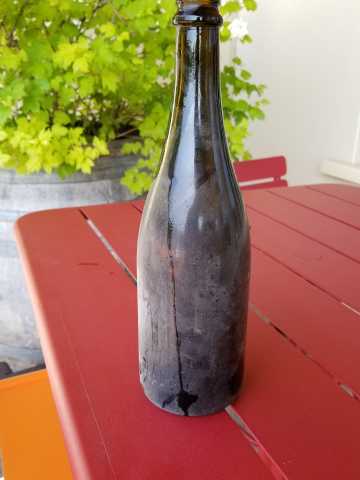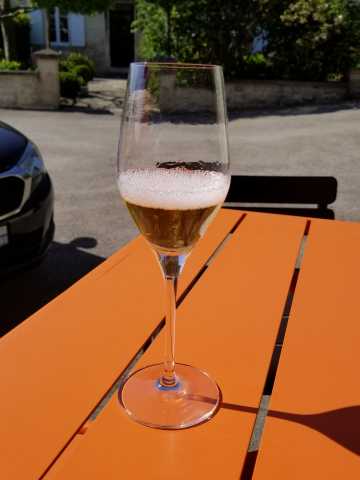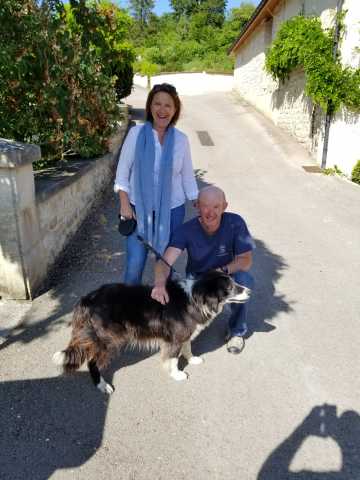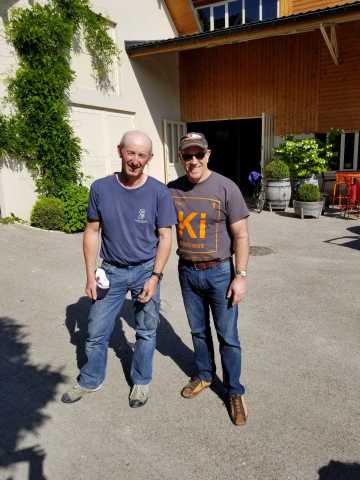Wednesday MOUSSE FILS
To get from DETHUNE to MOUSSE, we leave the Montagne and head into the Marne Valley. The Marne runs west of Avize and Bouzy, spanning out to the west and around the underside of the Montagne. The Google Map below can help orient your eye. You can drive through Epernay to get there, or do as we did and go through the Montagne, which is beautiful, and cut through some of the small valleys that ultimately dump into the village of Cuisles where Mousse is based. I offer some photos below of the small villages, like Fleurie la Riviere, to give you a sense of the connecting villages that you pass through on the route we took.
When we got to Mousse, we met with Julie who has worked for Cedric Mousse now for a few years. She is very fluent in English, and is working on her Master’s in Intl Business. She loves the winery and her role there, which is in part to help with visitors like us, but she also understands the process of making the wines very well, too. She was a real delight to spend what was nearly two hours of touring the vineyard, which is just around the corner from the winery. The village of Cuisles (pronounced kweels) is very small, which is no surprise as so many of them are. So, to walk from the winery to the vineyard is a right, a left and probably 500 steps. Then voila, you can see the biodynamic plot that is in part the Mousse acreage. The family started making champagne here about 100 years ago, and there are 12 generations of Mousse vignerons going back in time. Again, lots of history.
In part why Julie spent the time with us was because Cedric was in the vineyards spraying some plant material, as well as some vinegar to help with PH, in order to adjust to the recent and expected rains, as well as try and reduce some of the stress that he believed was going on in the vineyards. We met him only briefly, as he was busy and running around in his vineyard clothes.
As for the winery at Mousse, much of the energy sources comes the solar they generate. They are working to be as self-sustaining as possible, and aside from their corks that they need to buy from Spain, they pride themselves on sourcing nearly everything else as close to the winery as possible. They have their own self-sustaining well that they use for water needs, as well. It’s an impressive place for those who value the aspect of eco-friendly.
With Julie, we tasted the entire range of wines, which you see below in both my TNs and photos. Pinot Meunier is king here, although there is some Chard and Pinot. And, there is a soil type called Terre d’Illite, or the green clay. One of the wines is named after the soil, which is prevalent in and around the village. And the Chardonnay plot used to be Meunier, but Cedric’s father was so puzzled as to why the Meunier did poorly on this plot that he dug up the vines and tried Chardonnay and it thrived. It needed the deeper soil, the aspect of that part of the vineyard that actually favored it. Finally, aside from the red wine that is used to make the Roses, there is really no wood used here–it is virtually all done in stainless. So, you can see the differences in approach between say here and then that of Vilmart, Marguet or Miniere, where wood is employed to varying degrees.
In sum, I really like the Mousse wines. The dosages run between 0-7 g/l, depending on the cuvee and the wines are priced really well. And, they farm in the way that interests me, of that which I want to support. I know some don’t see this the same way as I do, and that’s OK. But, if you want to support this philosophy, then these are wines you want to buy and try.
-
2012 Moussé Fils Champagne Terre d’illite Blanc de Noirs - France, Champagne (5/16/2018)
Disgorged 10/2017, using 95% PM and 5% PN. 5 g/l dosage. Grapes all come from the various Cuisles parcels near the winery. Named after the green clay that is the sub-soil of the village. Shows a good punch of intensity, with lemon peel, citrus, black cherry and terrific length. Lovely. -
2013 Moussé Fils Champagne Special Club Les Fortes Terres - France, Champagne (5/16/2018)
Will be released later this year. 100% Pinot Meunier from the single parcel near the winery in Cuisles, from the lieux-dit called les Terres Fortes. 3 g/l dosage and disgorged 11/2017. Lots of mid-palate generous texture here, along with a mineral/tonic water quality, zesty and a good spine of acid. Finishes with some bread dough notes and light lemon. -
NV Moussé Fils Champagne Anecdote Blanc de Blancs Brut - France, Champagne (5/16/2018)
Mousse has so little Chardonnay in the range, but there is one single parcel, that was formerly Pinot Meunier but it performed so poorly that Cedric’s father decided to figure out why. He dug down and found out that the green clay was nearly 160cm down, which was far too deep for the vines to reach. So, he pulled it out and planted Chardonnay, and the plot is called Les Varosses. This has a different mouthfeel than all the other Mousse cuvees, as the texture shows a polish and smooth expression. Creamy lemon, along with some apple. Quite BdB in tone and I enjoyed this, as change of pace for the rest of the PM and PN dominated range. -
NV Moussé Fils Champagne Blanc de Meuniers Premier Cru Brut Zéro Les Vignes de Mon Village - France, Champagne (5/16/2018)
This is made solely from the Cuisles fruit, with a base of 2014/2015. Zero dosage and 100% Pinot Meunier. It is also aged under cork with the staple, so no cap. Beautiful balance, stony, lively acidity, lemon, stone fruit and it reminds me of the same purity that I found in the Benoit Marguet cuvees, which too are zero dosage. As it breathes, and the bubbles leave, it becomes creamy, a still wine resemblance with terrific balance. Lovely. -
NV Moussé Fils Champagne Brut Rose Effusion - France, Champagne (5/16/2018)
This was our last wine to taste of the Mousse range. This is the blend of both soleras that they maintain, with a total composition of 92% PM and 8% PN. 6 g/l dosage and I forgot to jot down the disgorge date. Fresh, lively, red berry, creamy and bright in tone. If I can find this locally in time via my shop, I will buy it. Enjoyed this as a solid Rose. -
NV Moussé Fils Champagne l’Or d’Eugène Blanc de Noirs Brut - France, Champagne (5/16/2018)
Disgorged 03/2017, 8% PM and 20% PN. 7 g/l dosage. The d’Eugene is a solera, this one starting with the dominant base of 2015, and going back as far as 2003. Floral, lime and honeyed. I find this cuvee and dosage to be outside of what I enjoy. I would rather drink the d’Eugene Extra Brut, and most certainly the disgorgement tardiff of the EB cuvee. However, for the entry bottle of the range for Mousse, they settle on this level of dosage so that they can have the wine be approachable for all palate preferences. They may lower it with time, as tastes may change and I gave them my feedback to help!
Posted from CellarTracker
